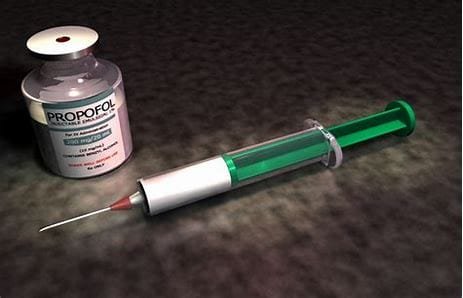Introduction

Propofol is a short-acting intravenous anesthetic agent that has become crucial in not only surgical but also intensive care environments. It is known for rapid onset of action and relatively short half-life. It is used within various clinical settings to induce and maintain anesthesia and as a sedative in critical care. This paper will seek to report on uses, formulation, types, and considerations concerning propofol in clinical practice.
Uses of Propofol
Thus, propofol is used for both induction and maintenance of general anesthesia. It has action within 30 seconds after its administration for producing smooth and controlled sedation. The rapid onset makes it useful for surgeries requiring general anesthesia with a desire for quick recovery that is essential in short surgeries or outpatient procedures.
It is used for sedation in most ICU patients: especially those mechanically ventilated, because it has sedative effects that can be regulated and managed according to the patient’s condition. Sedation with propofol is also preferred in neurocritical care of patients suffering from head trauma or increased intracranial pressure because it reduces cerebral metabolism.
Procedural sedation: Propofol has gained popularity for minor surgical procedures where general anesthesia is not absolutely warranted but some degree of sedation would be appropriate, like in endoscopic, dental, and imaging procedures. The action of propofol is known to be predictable, so, within a short period of time, patients undergoing any kind of short diagnostic or therapeutic procedure can achieve speedy comfort. Since propofol does not have its own intrinsic analgesia, it is often combined with opioids for such uses.
Off-Label Uses: Propofol is primarily used for sedation and anesthesia, but there are studies for off-label use, such as refractory nausea and vomiting. It has proven efficacy in certain cases of refractory seizures, but further research is required to establish them as standard practices.
Formulation of Propofol
Propofol is an oil-based emulsion that is insoluble in water, hence requiring formulation in a lipid emulsion. In the standard case, 10 mg is found in each milliliter of emulsion. Additional ingredients that stabilize the drug and keep it in injectable form include soybean oil, glycerol, and egg lecithin. Given its white, milky look, propofol can also be referred to as “milk of amnesia.” However, the liquid-based formulation of propofol has some associated risks that may arise from leaving it open or contaminated for quite some time. This is done using propofol ampoules in strict asepsis, and usually they are discarded within six hours since opening.
Several formulation advancements have been made to enhance the optimization of propofol. More advanced formulations include various lipid emulsifiers or antioxidants aimed at decreasing lipid-related side effects. This is effective, but the lipid aspect makes propofol not suitable for patients allergic to eggs or soy, but this is rarely a situation. Propofol includes sodium hydroxide that maintains a pH close to one that encourages stability and safety for the patient.
Forms of Preparing Propofol
Standard Lipid-based Propofol (Propofol 1% and 2% Solutions) Since the generic formulation of propofol is most commonly supplied at 1% (10 mg/mL) or 2% (20 mg/mL), this formulation is likely most frequently used. More probably, it has been anesthetics and sedative workhorse for centuries. The concentration of propofol may vary with how it is to be utilized and with the weight and age of the patient or the patient’s general medical condition.
Propofol with Antimicrobial Additives: This formulation, being an oil-in-water emulsion, has a propensity for bacterial contamination. It is therefore made with additives, such as EDTA, that inhibit bacterial proliferation. These formulations prolong the safe use time of an opened ampoule and reduce infections, especially in situations where true asepsis cannot be maintained.
propofol Disodium: propofol is one of the propofol products developed as an alternative formulation, designed to sidestep some of the complicating problems with lipid-based propofol formulations, primarily pain upon injection and ease of microbial contamination. propofol is itself water-soluble, cutting down injection pain and, more importantly, microbial development. Once it reaches the internal environment, it is processed into the active form of propofol and exerts similar effects. The onset of action is slower compared with standard propofol and will find a limited role in patients requiring rapid sedation.
New Emulsions and Formulation Developments: New emulsions, such as medium-chain triglycerides, are being developed to minimize the side effects associated with long-chain lipid emulsions in conventional propofol. Formulations involving nanoparticles are also being developed to enhance the safety profile of propofol through stabilization and reduction in lipid concentration.
Pharmacokinetics and Mechanism of Action

Propofol exerts its effect through the potentiation of the inhibitory neurotransmitter gamma-aminobutyric acid (GABA) at the GABA-A receptor. This leads to hyperpolarization of neurons and, consequently, a soothing effect on CNS. This rapid onset of propofol is because of the lipophilic nature with which it easily penetrates the blood-brain barrier and triggers sedation in under one minute. Propofol is primarily metabolized through the liver and rapidly reverses after stopping infusion because of redistribution to other tissues from the brain and elimination in the body.
Side Effects and Considerations
Despite being widely accepted because of their efficacy and rapid action, propofols are by no means devoid of risk. Common side effects reported include hypotension and respiratory depression, as well as pain at the injection site. Though rare, severe reactions such as propofol infusion syndrome may be expected; they do occur more likely with higher doses and prolonged usage. PRIS is characterized by metabolic acidosis, cardiac dysfunction, and muscle breakdown. Patients with diseases such as mitochondrial disorders may be at higher susceptibility to PRIS and must be sedated with alternative agents.
Patients under propofol in ICUs are also on high alert for rises in lipids since it has the lipid-based formulation; more importantly, long infusions of propofol pose the risk of lipid overload-induced pancreatitis or other metabolic complications in the patient.
Conclusion

Propofol was invented to change the status of anesthesia and sedation; rapid onset and fast offset make it essential within any surgical and critical care practice environment. A diversity of formulations tailored to varied needs and patient populations gives propofol its status as a versatile and potent sedative and anesthetic. The risks, however, make for careful handling, monitoring, and guidelines to ensure that the safety of patients will be achieved, especially during cases of long-term use.
Further research on other alternative formulations and understanding the long-term effects of propofol is likely to improve its application in the broad field of clinical scenarios.



